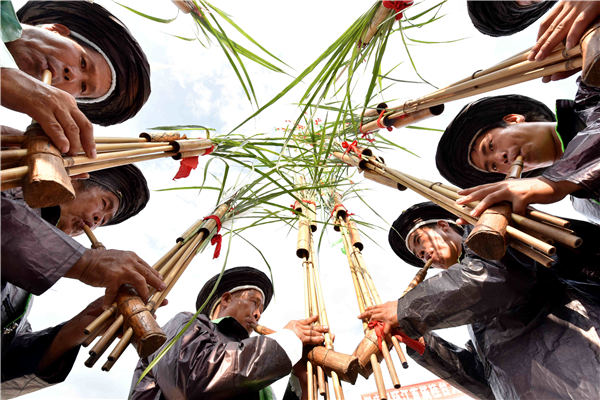Southern villages fuel tourism through folk customs
 |
|
Shuangletun has relied on its multiple ethnicities to develop into a popular getaway. [Photo provided to China Daily] |
Sitting in the Guangxi Zhuang autonomous region's Huanjiang Maonan autonomous county, the village is home to ethnic Maonan, Miao and Yao people, which makes for an ideal environment to experience distinctive Chinese folk customs.
"The number of tourists usually peaks on weekends, and villagers will perform traditional guest-welcoming shows," says Wei Yulong, the village head.
Every guest will be served a bowl of liquor before entry, and locals will dance and play reed-pipe wind instruments during the ceremonies.
The women's heavy silver accessories are quite a sight, and the roasted pork is something one shouldn't pass up.
Bonfire parties at night will transport even the most ardent urbanite from the hustle and bustle of the city back to a soothing, simpler, primitive state of mind.
The traditional singing and dancing of local ethnic people have drawn outsiders' attention since 1998, when they were invited to give performances across the country.
In 2009, villagers began to run tourism businesses and raised 1.35 million yuan ($195,800) on their own to build rural restaurants and hotels.
As the nation's precision poverty-alleviation program has progressed since 2016, the Huanjiang government has invested more than 10 million yuan to upgrade infrastructure in Shuangletun.
Roads, parking lots, toilets and an art-and-sports center were improved, while a pavilion and an artificial lake were built, giving the old village a much-needed face-lift.
Shuangletun is expected to receive 31,000 visitors in 2018, and tourism revenue is projected to hit 3.8 million yuan, says Zheng Zhiyong, director of Huanjiang's tourism authority.
Copyright © Hechi Municipal People's Government. All rights reserved.
Presented by China Daily.
京ICP备13028878号-6






